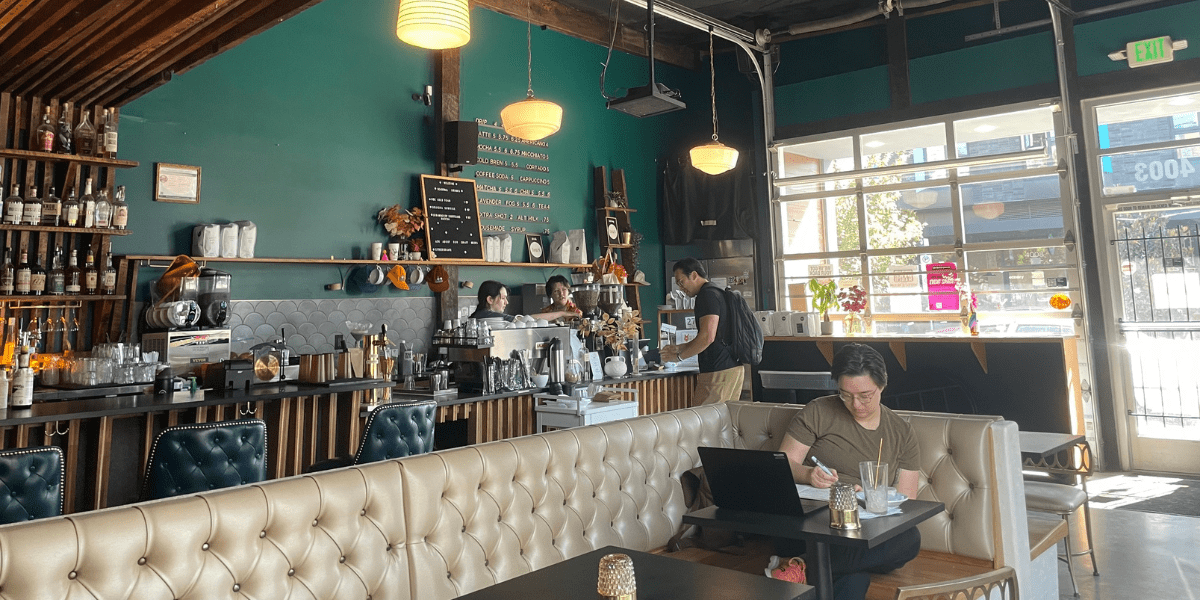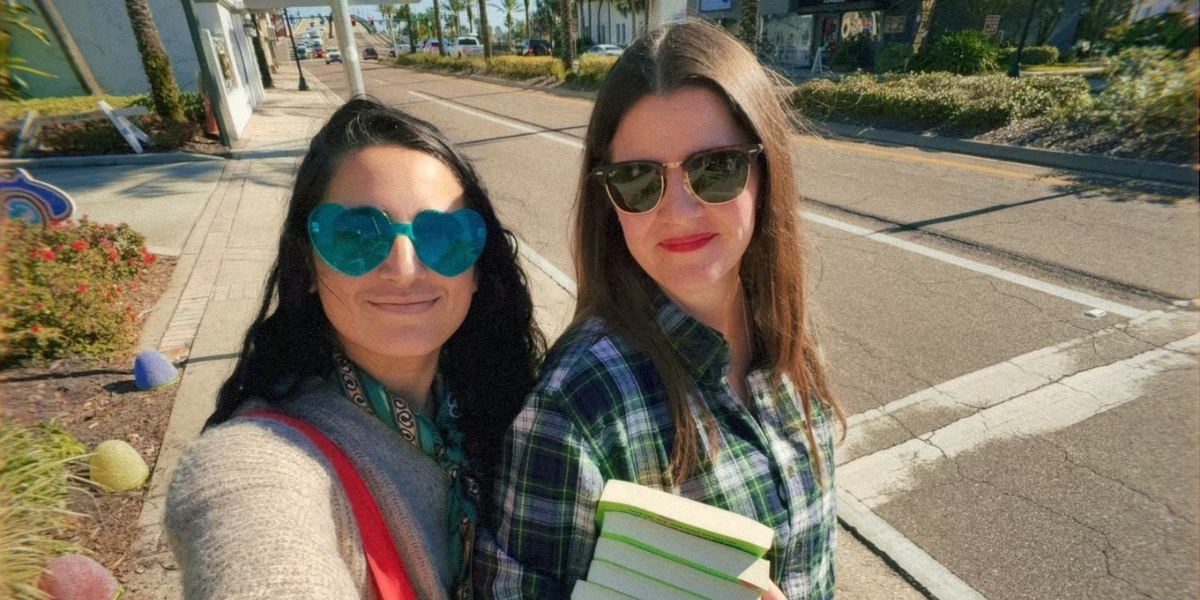 I moved to Mexico City a year and a half ago to teach English after I graduated from college. I’m originally from Illinois, so I definitely have an outsider’s perspective on the city; but I also love it here, and I’m so excited to tell you all about how wonderful it is.
I moved to Mexico City a year and a half ago to teach English after I graduated from college. I’m originally from Illinois, so I definitely have an outsider’s perspective on the city; but I also love it here, and I’m so excited to tell you all about how wonderful it is.
Mexico City, also known as Distrito Federal, or D.F., is one of the biggest cities in the world. It’s located in the Valley of Mexico, on top of what used to be a large lake, surrounded by mountains. Sometimes, depending on where you are in the city/ how bad the pollution is, you can even see the mountains! The city is divided in to 16 delegaciones (boroughs) and who knows how many hundreds of colonias (neighborhoods). Fun fact: people who live in D.F. are known as chilangos or defeños.
+
The Gay Situation
+
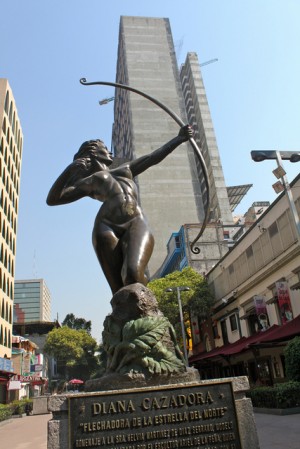
Mexico City is, in many ways, the gay capital of Mexico (the other competitor for this title is Guadalajara, but I’ve never been there, so I can’t say). It’s large and cosmopolitan, which tends to ensure that people will be open-minded. Queer people here enjoy a whole host of important rights: same-sex marriage is legal in D.F., same-sex couples can jointly adopt children, trans* people can change their gender on legal documents. In Zona Rosa you are sure to find cute queer couples canoodling and kissing, but you won’t look at all out of place holding hands with your sweetie in Condesa or Roma, either. Even in my very boring, un-cool neighborhood (Navarte), I occasionally see queer couples. Most parts of D.F. are, if not gay-friendly, then at least gay-tolerant. However, it’s a big and diverse city, and what is fine in one neighborhood may not be considered acceptable in another. I’ve only recommended places in this guide that I think you can confidently go to while being queer; but when visiting new parts of the city, you should make a quick judgement of your surroundings before you start making out with your girlfriend.
These are some of the neighborhoods you’ll want to know while you’re here:
Centro Histórico, which is crowded and old and filled with historic buildings, but which also has a lot of cool stuff to do if you know where to find it.
Roma and Condesa, D.F’s trendy / hipster / yuppie neighborhoods, where you’ll find a lot of the best bars and coffee shops and such.
Coyoacán, the former home of Frida Kahlo, which used to be its own town and now is one of the quieter, more idyllic parts of the city.
Zona Rosa is a strange mix of gay clubs, sex shops, and fast food stores, frequented both by queers and by the business people who work on nearby Reforma. It’s not for everyone, but it’s the place to be if you want to find fellow queers.
+
The Queer Bars
+
Zona Rosa is the obvious place to go when looking for queer bars. The scene is very club-focused, and, as is true in many gay neighborhoods, it caters mostly to men. But not to fear, queer ladies! There’s stuff for us here too, and it’s worth point out that women are generally welcome everywhere, even though you might end up in the minority.
Just so that you’re prepared, I should note that the gay clubs here almost always feature stripper shows (usually male), along with drag queens and other performers.
On Thursdays, Lipstick (Amberes 1) has lesbian night, with no cover for women before 10:30. Lipstick is an upscale-type place, with a fancy staircase leading upstairs to multiple rooms with some seating and chandeliers and big windows. The women are pretty and mostly femme-y, and the beers are expensive.
Cabaretito (Londres 77) also has a lesbian night on Thursdays, with a very different crowd. This place has a more casual vibe and a wider variety of gender expression than at a place like Lipstick. The women are friendly and the drinks are cheap. On Thursdays men aren’t allowed on the main dance floor, so leave your guys friends at home.
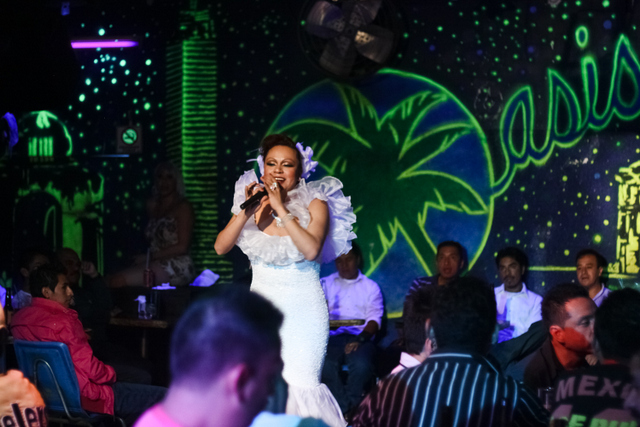
Botas Bar (Niza 45) has two different floors, one for men and one for women, so this is your place to go for a women’s bar on a night other than Thursday. This place has a somewhat older crowd than most of the bars in Zona Rosa; you’ll see lots of couples dancing to cumbia here. Not a great place to meet single girls, in my experience, but a good place to go with a group of friends.
Of the mixed bars, I like Lollipop (Amberes 14) best. This is your classically generic gay bar with three floors and lots of people dancing to electronic/pop music. They have a nice balcony on the second floor that overlooks Amberes street, where you can go for some fresh air or a cigarette. Though it’s mostly men, there are always other women there.
If you don’t like clubs, you’ve got plenty of other options in Zona Rosa. I’m a big fan of Taco-Bar (Estraburgo 33). This strangely named place (if they serve tacos, I’ve never seen anyone eating them) serves very cheap beer to a crowd of young queers clustered around outside the bar, with loud music blasting from within. It gets busy on the weekends, when you can find people dancing on the sidewalks or singing along to Selena songs.
There’s also La Botica (Amberes 1b), a mezcalería with a few different locations in the city, though this one is obviously the gayest. Mezcal is a smokey liquor made from the maguey plant (it’s like tequila). It’s extremely popular in D.F., so you’ll see mezcalerías all over the place. La Botica is one of the best.
If you’re tired of Zona Rosa, there’s also a small queer area in the Centro Histórico, on República de Cuba. This street is even more male-dominated than Zona Rosa, but I like it because it has less of a chain-store vibe. There you will find Mexico City’s gay cantina, El Viena (República de Cuba 2). A cantina is a classic style of Mexican bar, traditionally reserved only for men. El Viena is still overwhelmingly male, but it’s a friendly place; you might want to go on a weeknight for a more relaxed atmosphere, though. They’ve got a great jukebox at this place, filled with Spanish-language hits, and some Madonna thrown in for good measure.
Next door to Viena is Oasis (República de Cuba 3), another very male bar that is fun nonetheless. Down the street there are some better options for meeting girls. La Purísima (República de Cuba 17) has a dance floor downstairs and a pulquería upstairs. Pulque is another alcoholic drink made of maguey. It’s an acquired taste—one that I have yet to acquire—but they also serve beer. The pulquería is kind of kitschy and fun to take people to, though the loud music makes it difficult to have a conversation. I guess you’re just going to have to sit extra close to that cute girl you’re with! Across the street is Marrakech Salón (Republica de Cuba 18), which gets very crowded and is a fun place to go dance after you’ve had your fill of pulque.
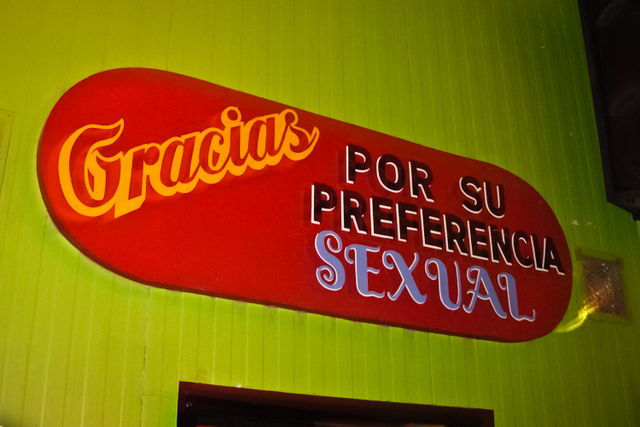
+
The Other Bars
+
Maybe you’re tired of the club scene at the gay bars, or maybe you just want to hang out in some other parts of the city. There are many, many bars in the city where you can comfortably go as a queer person and enjoy yourself. Here are a few of the places I like to go:
La Nacional (Orizaba and Querétaro, Col. Roma) is a popular mezcalería that also has a good selection of Mexican beers, if you’d like to try something beyond the usual Corona/Victoria/Indio boring beers most bars stock. Actually, this one block—Orizaba between Querétaro and San Luis Potosí— is filled with bars, one right next to the other. Next door to La Nacional is another Botica, then a beer bar called La Graciela, and then a couple more bars next to that one. Around the corner is Lilit (Orizaba 125, Col. Roma), which serves cocktails that are pricey but delicious.

This is a good street to go bar hopping—all the bars fun, generally crowded, and when you get tired of one place you can just move next door. Another good street for bars is calle Regina, in the Centro Histórico. This pedestrian street is filled with cute mezcalerías and little restaurants, and there are always people out. I like Al Andar (Regina 27) for mezcal—the staff are really friendly and will help you pick out a mezcal if you don’t know what to order. Down the street is Los Canallas (Regina 57), which has great mojitos, good sangria, and other mixed drinks, along with a relatively extensive menu. The bar’s attached to a hostel, so there are often tourists here; but it somehow resists feeling touristy.
Salón Malafama (Michoacán 78, Col. Condesa) is my choice for pool—its big space is almost entirely given to well-maintained pool tables. It can get pretty crowded at peak times, so you might have to wait for a table. Or you could come earlier—they have discounts before 4. They serve food at this place, but I’ve never seen anyone eating it.
+
Things to Eat and Drink
+
Mexico City is a great food city. The best way to eat here is to eat on the street—street food is delicious, cheap, and available everywhere you go. It’s hard to recommend specific stands, both because there are so many amazing ones and because it can be hard to find any individual one if you don’t already know where it is; but I can tell you some of the foods you should look out for.
In the mornings you should have tamales. They’re sold out of big metal canisters, along with atole, a sweet, hot, corn-based drink that I highly recommend. Later in the day you can have tacos, piles of meat with salsa and cilantro and onion all on top of a soft corn tortilla. Go for the al pastor if you see it—these tacos, with pork marinated on a shawarma-style spit with pineapple, are a Mexico City specialty. If you don’t eat meat, you could have quesadillas, instead. Quesadillas, which do not automatically include cheese here, can be stuffed with anything from squash blossoms to huitlacoche (corn fungus) to more meat. At most quesadilla stands you’ll see them making the tortillas fresh and by hand! These places usually sell other corn dough based foods, like gorditas, huaraches, and tlacoyos, so ask what your options are. Then there are tortas, the Mexican sandwich with avocado, tomato, mayo, chipotle, and/or rajas (spicy pickled peppers). I usually get egg and cheese, but there are lots of other choices.
Also be on the look out for esquites: cups of corn mixed with mayo, lime, salt, chile powder, and cheese. YUM. For something to drink, the juice stands sell amazing fresh-squeezed juices in all sorts of combinations, and with prices that will make you horrified that you ever paid 4 bucks for a tiny little glass of fresh juice back in the States. I recommend the anti-gripal (flu-fighter): orange juice, guava, pineapple, lime, and honey.
Eventually, though, you might want some options other than street food. Not a problem! Here are some suggestions:
Delirio (Alvaro Obregón and Monterrey, Col. Roma) is a trendy cafe-deli on Roma’s central street, Alvaro Obregón. Owner Mónica Patiño is one of D.F.’s most prominent chefs, and this is her venture in to more casual dining. They sell delicious sandwiches and salads here, along with things like bread, jams, cheeses, and coffee beans to take home with you. Eat your food on the sidewalk tables for excellent people-watching.
Corazón de Arbol (Coahuila 143, Col. Roma) is a small and adorable vegetarian restaurant. They have a wonderful rooftop patio where you can eat which might make you temporarily forget that you’re in a major metropolis. Downstairs they also sell hard-to-find products like quinoa and organic milk.
If you want to try some food from the Yucatan region, I like Xnic (Tabasco 258, Col. Roma). They serve two yucateco specialties at this hole-in-the-wall: sopa de lima, a chicken soup with lime and tortillas, and cochinita pibil, a delicious type of marinated pulled pork.
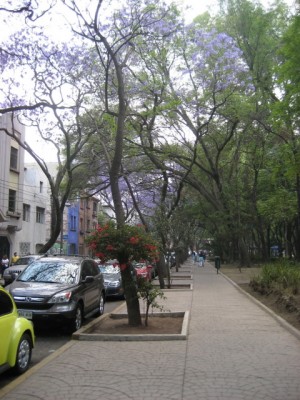
Cancino (Plaza Villa Madrid 13, Col. Roma) might be a good place for a date night. They serve what I think is the best pizza in D.F., with toppings as traditional as margherita and as strange as baba ghanoush. The wood burning oven they bake the pizzas in makes for a nice backdrop, and the restaurant faces the very striking Cibeles fountain.
MOG (Alvaro Obregón 40, Col. Roma) is a Japanese restaurant in a space that looks like it’s been furnished with flea market finds: mis-matched chairs, old lamps, strange art on the walls. The waitstaff are all beautiful hipsters and the food is tasty.
I like Las Soupremes (Chilpancingo 35, Col. Condesa) largely because of their awesome name; but they also serve good soups, salads, and sandwiches there, with well-marked vegetarian and vegan options.
Good coffee can be frustratingly hard to find here (they grow coffee in Mexico! Why does everyone drink instant?) but I like La Jardinera (Campeche 294, Col. Condesa). This place is small and fairly new, but the atmosphere’s friendly, and they sell little sandwiches and other snacks along with the coffee (make sure to ask for it without sugar, if that’s how you like it, or they’ll add it automatically). Café Toscano (Av. México and Michoacán, Col. Condesa) also has good coffee, plus a perfect location right in front of the beautiful Parque México. This one’s not cool at all, but the best cup of coffee I’ve had here was at the Palacio de Hierro department store in Coyoacán. They have an espresso machine in the food section, and you can take your cup and drink it at the tables in the lovely… mall. I wouldn’t recommend it for the atmosphere, but try it if you’re a desperate coffee snob.
+
But Where Will I Buy My Books?
+
I don’t know about you all, but I won’t live in a city that doesn’t have good bookstores. Here are the places I like:
My favorite bookstore in all of D.F. is Under the Volcano Books (Cerrada Chiapas 40-C, Col. Roma), Mexico City’s only dedicated English-language, used bookstore. Grant, the ex-pat owner, keeps the place stocked with amazing books, including stuff by queer favorites such as Jeanette Winterson and Dorothy Allison. On most Friday nights he hosts BYOB get-togethers at the store; it’s a great place to meet English-speaking literary types, if that’s your thing.
El Péndulo is a big bookstore with several locations here—I like the one in Condesa (Nuevo Leon 115), which has a nice selection of English-language books; but the one in Polanco (Alejandro Dumas 81) has been featured on at least one world’s most beautiful bookstores list, so that might be worth seeing. All the Péndulos have little restaurants inside, where you can order food with punny literary names like “Ensalada de Pollo Neruda” (chicken Neruda salad).
I have my money on Fondo de Cultura Económica Rosario Castellanos (Tamaulipas 202, Col. Condesa) for most beautiful bookstore in D.F. They’ve got a huge, very stylish space, filled with books on all subjects. I think they’ve got an especially good selection of art and design books. There’s a coffee shop in the store, so you can sit and read your book while you’re there.
Armario Abierto (Agustin Melgar 25) sells books about sex and sexuality. It’s a very small space, but much of it’s dedicated to queer stuff. Here you can get back issues of Mexico City’s sporadically published lesbian feminist magazine, LeSVOZ. They also stock a small selection of sex toys.
+
Things to Do
+
You may think that you’re going to be spending all you time in D.F. partying in Zona Rosa and stuffing yourself with delicious food, but you’re probably going to want to do other things, too.
The Museo Nacional de Antropología is Mexico City’s most famous museum, and with good reason: this place is absolutely fascinating. The massive building that houses the museum is divided in to two levels. The first floor is archeological artifacts from all over Mexico—think Olmec heads from the east coast, Mayan hieroglyphs from the south and Mexica sculptures from the Valley of Mexico. The second story is devoted to exhibits on contemporary culture in Mexico, with a focus on indigenous groups and traditions.
Everyone’s favorite queer Mexican painter, Frida Kahlo, lived in D.F., and her house is now a museum: the Casa Azul. Go there to learn about her life and to see the rooms she lived in; don’t go expecting to see many of her actual paintings. For that, you’re better off at the Museo Dolores Olmedo Patiño.
If you want to see a movie while you’re here, my recommendation is the Cineteca Nacional. Have you ever seen a huge movie theater completely packed on a weekday night for a Fellini film? I have—at the Cineteca! They show a great selection of old, artsy, and/or independent movies from all over the world (which means you can often find something in English if you don’t understand Spanish). It’s currently closed for renovations, but they’ve been farming out their screenings to other theaters around town and should be up and running again soon.
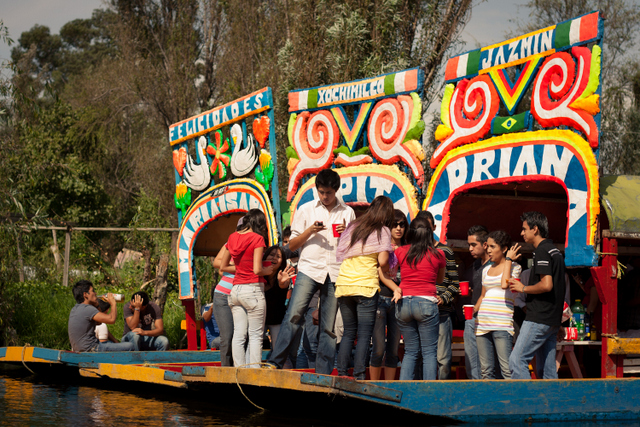
Xochimilco is one of those things you can only do in D.F., and you should definitely experience it while you’re here. Back in the day, before the Spaniards came and Mexico City was still Tenochtitlan, the whole city was built around a series of canals, like in Venice. The Spaniards filled in most of the canals, but they still exist at Xochimilco. This is the best way to do it: go with a big group of friends—the more the better! Bring lots of food, beer, portable speakers; whatever you think you might want for a party. You can get that stuff on the canals, but it will be more expensive/not as good. You hire a boat driver to take you through the canals—you’ll negotiate the length of the trip and price before you get on (and you will have to haggle). Then you just relax on your boat and watch the other people go by. There’s a real festive atmosphere out there, especially on Sundays. You’ll see big families, groups of friends, tourists, floating mariachis selling songs.
If you’re not going to Xochimilco, La Lagunilla flea market is a great way to spend your Sunday mornings. Walk through all the clothes and bootleg CDs to get to the good stuff—antique furniture, LPs, Mexican crafts, and random flea market knick-knacks. There’s lots of food being sold here, so you can snack while you shop or get a michelada (beer+lime+salt+other sauces) since Lagunilla seems to fall in to some loophole regarding the normal laws against drinking outside.
If sports are your things, there’s lots to see in D.F. I’m a big baseball fan, so I like going to see the Diablos Rojos play (though I should warn you that you stand a good chance of hearing someone yell homophobic slurs at the opposing team—booo). Mexico City also has three major soccer teams: Club América, Cruz Azul, and Pumas. I don’t like soccer so I’ve never been, but, unsurprisingly, it’s very popular here. If you like your sports teams with women, Mexico City has roller derby! Visit their facebook for info on matches.
+
College
+
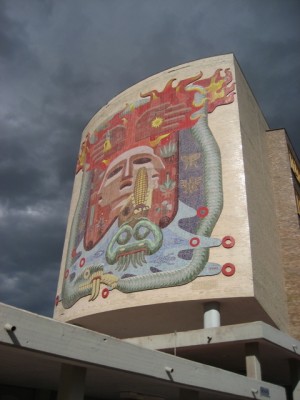
Mexico City is home to several universities, the largest of which is the UNAM (National Autonomous University of Mexico). The UNAM is an elite public university with a huge campus in the southern part of the city. The campus and the area surrounding it is known as Ciudad Universitaria (University City), which should give you some idea of the size. Of special interest to most of you, I suspect, is the Centro de Enseñanza para Extranjeros (The Teaching for Foreigners Center), which offers Spanish classes.
Since I don’t attended UNAM and I don’t know many people who do, I don’t know C.U. very well; but where there are college students, there are queers, so you should probably go there. The UNAM has a group for queer girls called the Grupo Lésbico Universitario; though “university” is in the name, their website says that non-students are welcome as are people with identities other than “lesbian”.
+
Safety
+
The first question I usually get from people back home about living in Mexico is “Is it safe?” The good news is that all the drug war stuff you read about in the news is not really an issue here. In terms of drug violence, Mexico City is actually one of the safest places to be in Mexico right now. However, regular old urban crime—think muggings and assaults—is a problem here. There are parts of D.F. that are known to be more dangerous (Iztapalapa, Tepito, to name a couple), but crime is a problem all over the city. You don’t have to be paranoid, but you should be careful: be aware of your surroundings, watch your back, don’t wander the streets late at night wasted out of your mind, etc. You know, pretty much what you should be doing in any major urban area.
One thing new arrivals to Mexico City are often told is that hailing a taxi off the street is dangerous. I do hear stories about taxi kidnappings, but I still hail cabs all the time, as do most of the chilangos I know. However, if my Spanish were worse or if I didn’t know my way around the city as well, I might not feel as comfortable doing that. A safe alternative are taxi stands (sitios), which you can find all over the city. Alternately, you can call a cab—I keep taxi numbers stored in my cell phone, and you can usually get a car to come for you within 15 minutes. TaxiMex (56 34 99 12) is a good one.
+
Resources
+
When I first moved to D.F., Macha Mexico was my #1 reference for the queer scene in the city. Run by an American, this English-language blog is filled with information about queer and queer-friendly events for women (macha= dyke). Sadly, it hasn’t updated in over a year, but the archives are still worth reading.
Mexico City has a queer community center, the Centro Comunitario de Atención a la Diversidad Sexual (Génova 30-H, Col. Zona Rosa). They offer legal assistance, workshops, HIV testing, etc.
The weekly events guide, Tiempo Libre, has a section for LGBT listings. You can buy it at news stands.
Well, that’s it, that’s all there is to do in Mexico City! Just kidding, you could never fit all there is to do in Mexico City in to one guide. But hopefully this is a good starting point. Any chilangas out there who want to tell me what I missed?




